Related Research Articles
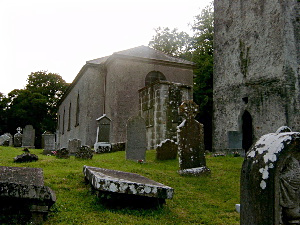
Ardbraccan is an ancient place of Christian worship in County Meath, Ireland. It is the location of the former residence of the Roman Catholic, then, after the Reformation, the Church of Ireland Bishop of Meath. It is approximately 30 miles from Dublin.

Saint Brigid of Kildare or Saint Brigid of Ireland is the patroness saint of Ireland, and one of its three national saints along with Patrick and Columba. According to medieval Irish hagiographies, she was an abbess who founded the important abbey of Kildare, as well as several other convents of nuns. There are few historical facts about her, and her hagiographies are mainly anecdotes and miracle tales, some of which are rooted in pagan folklore. They say Brigid was the daughter of a chieftain and a slave woman, and was raised in a druid's household before becoming a consecrated virgin. She is patroness of many things, including poetry, learning, healing, protection, blacksmithing, livestock and dairy production. In her honour, a perpetual fire was kept burning at Kildare for centuries.
Bohermeen is a Roman Catholic parish in the Irish Diocese of Meath. Its English name is a corruption of an ancient Irish language name, An Bóthar Mín, which meant the smooth road. Originally one of the five famed ancient roadways that led from the mediaeval capital of Ireland, Tara, approximately 10 miles away cut through the area. The quality of the roadway, in an era of dirt-roads, earned for it the nickname of the smooth road, An Bóthar Mín.

Ardbraccan House is a large Palladian country house in the town of Ardbraccan, County Meath, Ireland. The historic house served from the 1770s to 1885 as the residence of the Church of Ireland Lord Bishop of Meath.

Oliver Plunkett was the Catholic Archbishop of Armagh and Primate of All Ireland and the last victim of the Popish Plot. He was beatified in 1920 and canonised in 1975, thus becoming the first new Irish saint in almost seven hundred years.

Durhamstown Castle is a 600-year-old towerhouse in the townland of Durhamstown of the civil parish of Ardbraccan which is in the barony (Ireland) of Lower Navan, in County Meath, Ireland. It has been inhabited continuously since 1420. It is named after a Mr. Dorream, whos family lived there in 1511, and has been converted into a guest house and restaurant.
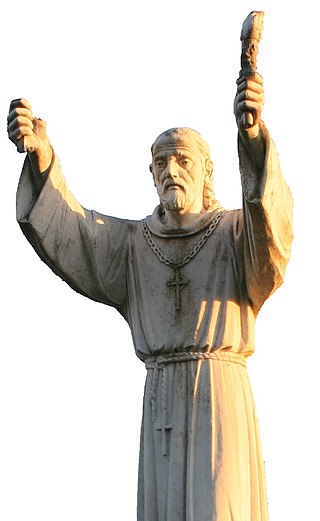
Finnian of Clonard – also Finian, Fionán or Fionnán in Irish; or Finianus and Finanus in its Latinised form (470–549) – was one of the early Irish monastic saints, who founded Clonard Abbey in modern-day County Meath. The Twelve Apostles of Ireland studied under him. Finnian of Clonard is considered one of the fathers of Irish monasticism.

Clonard Abbey was an early medieval monastery situated on the River Boyne in Clonard, County Meath, Ireland.

The Diocese of Meath is a Latin Church diocese of the Catholic Church that is located in the middle part of Ireland. It is one of eight suffragan dioceses of the ecclesiastical province of Armagh. Thomas Deenihan has been bishop of the diocese since 2 September 2018.

Saint Féchín or Féichín, also known as Mo-Ecca, was a 7th-century Irish saint, chiefly remembered as the founder of the monastery at Fore (Fobar), County Westmeath.
Tírechán was a 7th-century Irish bishop from north Connacht, specifically the Killala Bay area, in what is now County Mayo.
There is archaeological evidence of insular monasticism as early as the mid 5th century, influenced by establishments in Gaul such as the monastery of Martin of Tours at Marmoutier, the abbey established by Honoratus at Lérins; the abbey of Mont-Saint-Michel; and that of Germanus at Auxerre. Many Irish monks studied at Candida Casa near Whithorn in what is now Galloway in Scotland.
Events from the year 1539 in Ireland.
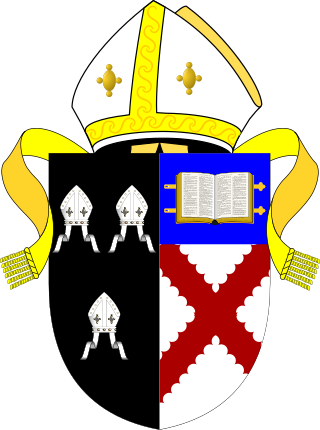
The United Dioceses of Meath and Kildare is a diocese in the Church of Ireland located in the Republic of Ireland. The diocese is in the ecclesiastical province of Dublin. Alone of English and Irish bishops who are not also archbishops, the Bishop of Meath and Kildare is styled "The Most Reverend".
Events from the 7th century in Ireland.
Events from the 6th century in Ireland.
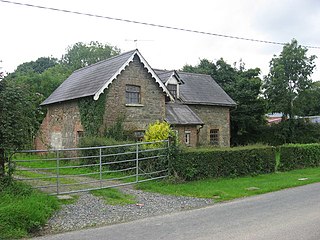
Drumcar is a village and a historical parish, in the barony of Ardee, County Louth, Leinster, northeastern Ireland.
Daniel Augustus Beaufort LL.D., was an Anglican priest and geographer, born in England to French Huguenot parents. He was rector of Navan, County Meath, Ireland, from 1765 to 1818, and a talented amateur architect also remembered for his 1792 map of Ireland.
Cormac, Bishop of Armagh and Abbot of Armagh monastery, Ireland from 481 to 17 February 497.
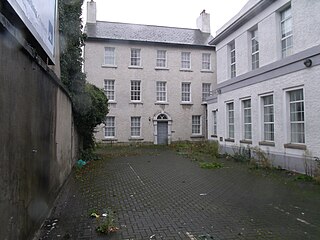
Saint Ultan's Children's Hospital was a paediatric hospital in Dublin, Ireland. It was named after Ultan of Ardbraccan, patron saint of paediatricians.
References
- 1 2 3 4 Grattan-Flood, William. "St. Ultan of Ardbraccan." The Catholic Encyclopedia. Vol. 15. New York: Robert Appleton Company, 1912. 24 Jul. 2013
- ↑ David Hugh Farmer The Oxford Dictionary of Saints (5th rev. ed.) (Oxford University Press, 2011) Ultan.
- ↑ Philip D. Noble, The Watkins Dictionary of Saints#. (Watkins (London), 2007).
- ↑ "Dictionary of Irish Biography | Dictionary of Irish Biography".
- 1 2 MacCormack, Katherine. The Book of Saint Ultan, Candle Press, Dublin, 1920
- ↑ Joyce, Patrick W., "Bishop Ultan and the Orphans", A Smaller Social History of Ancient Ireland, Chap. XXVI, 1906
- 1 2 Canon Ellison, "Ardbraccan Anecdotes", Navan and District Historical Society
- ↑ Duffy, Patrick. "St Ultan of Ardbraccan (d. 657) abbot-bishop carer of sick infants", Catholic Ireland, September 6, 2012
- ↑ "St. Ultan's Church, Killinkere", Diocese of Kilmore
- ↑ "Dublin: Saint Ultan's Hospital". BBC. Retrieved 7 May 2019.